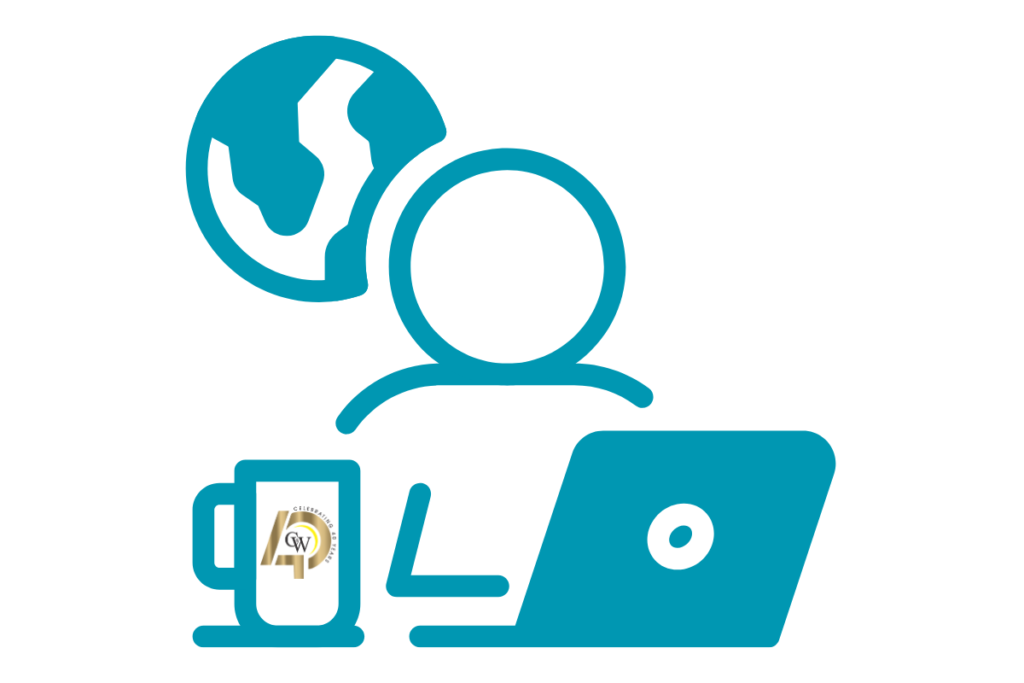Mastering Remote Workforce Management: Best Strategies & Tools

Managing a remote workforce involves overseeing employees working from different locations, often spanning multiple time zones and diverse environments. As more companies embrace flexible work models and entirely remote workforce setups, mastering remote workforce management has become more critical than ever. This evolving landscape requires leaders to adapt their management styles, leverage innovative tools, and handle IT issues that may arise when working remotely.
This article will guide you through the best strategies, cutting-edge tools, and proven practices for effective remote workforce management. Whether you’re managing a small remote team or a vast distributed workforce, understanding these elements will empower you to enhance collaboration, boost productivity, and maintain employee engagement in a remote work environment.
Key Takeaways
Remote workforce management is essential for overseeing off-site employees effectively, leveraging technology to maintain productivity and engagement.
Adopting remote work models not only enhances employee job satisfaction and retention but also allows companies to reduce costs and access a global talent pool.
Effective management faces challenges like communication barriers and accountability, necessitating the use of robust tools and best practices to foster a productive remote work environment.
Understanding Remote Workforce Management
Remote workforce management refers to the process of overseeing employees who work from home or other off-site locations. This concept has gained traction with advancements in technology and changes in work culture, enabling more people to work from flexible locations. At its core, remote workforce management involves tailored communication, software, and processes to support remote and hybrid employees effectively.
Effective remote workforce management includes:
Providing insights into employee performance and helping identify disengaged employees.
Offering flexibility in the workday schedule, allowing employees to manage their personal and professional commitments more efficiently.
Ensuring reliable internet and remote collaboration tools to keep teams productive and connected.
It is clear that remote workforce management is no longer optional but a necessity. Utilizing remote workforce management software and effective strategies helps businesses maintain productivity and support employee engagement.
The Benefits of Technology in Remote Work
Remote teams thrive on technology. Communication platforms like Microsoft Teams, Zoom, and many others make it easier to stay in touch, while cloud-based applications such as Google Workspace or Microsoft 365 ensure that important documents are always accessible. Advanced cybersecurity tools also allow employees to work securely from home without compromising sensitive company data. These tools empower businesses to scale, hire talent globally, and operate without the traditional limits of an office space.
Key Benefits of a Remote Workforce
The benefit of a remote workforce offers are manifold:
Remote employees often exhibit higher productivity and job satisfaction compared to their in-office counterparts, leading to increased overall productivity.
Employers gain significant financial advantages through reduced overhead costs such as office space and utilities.
Remote work enables companies to tap into a global talent pool, providing access to specialized skills and diverse perspectives that can drive innovation and competitive advantage.
Moreover, remote workforce management can enhance employee retention by offering flexible work arrangements that cater to individual needs and preferences. This flexibility not only improves job satisfaction but also supports a healthier work-life balance. Understanding these benefits enables businesses to manage remote employees more effectively and harness the full potential of their teams.
Flexibility for Employees
Remote work provides employees with several benefits:
A better work-life balance by eliminating the need for long commutes and allowing more time for personal pursuits.
Flexible schedules that allow employees to manage personal commitments better, leading to improved concentration and productivity.
More control over their work styles and hours, enabling them to tailor their work environment to their needs, resulting in higher job satisfaction and performance. Additionally, many employees choose to work remotely, enhancing their overall experience.
Remote work fosters a sense of autonomy and empowerment, contributing to better engagement and morale among employees. Flexible work arrangements allow employees to balance their professional and personal lives, enhancing their overall well-being and productivity. This flexibility is a key component in managing a remote workforce successfully.
Cost Savings for Employers
A remote working model can significantly lower operational costs for businesses. Reducing the need for physical office space helps companies save on rent, utilities, and other overhead expenses. These cost savings can then be reinvested into the business, fostering growth and innovation. Furthermore, eliminating employee commuting costs can also contribute to a company’s financial health, making remote work a financially sound strategy.
In addition to direct cost savings, remote work environments can enhance employee productivity and engagement, leading to better business outcomes. Employers can allocate resources more efficiently, focusing on employee development and retention rather than maintaining office infrastructure.
Overall, the financial benefits of remote work are substantial, making it an attractive option for modern businesses.
Access to Global Talent
One of the most significant advantages of remote work is the ability to access a larger talent pool without geographical limitations. By hiring remote employees, companies can find specialized talent from anywhere in the world, enabling them to build a diverse and skilled workforce. This access to global talent can lead to competitive advantages, as businesses can recruit the best candidates regardless of their location.
A diverse workforce brings different perspectives and ideas, fostering innovation and creativity. Leveraging remote work enhances recruitment outcomes, enabling companies to build teams well-equipped to tackle global challenges. This access to a larger talent pool is a key benefit of adopting a remote working model.
Challenges In a Remote Workforce with Technology & a Solution
Managing a remote workforce comes with its own set of challenges. Common issues include miscommunication, misplaced expectations, technological issues and risks related to data privacy and security. Measuring productivity and ensuring accountability are significant challenges, as remote teams lack the physical presence that allows for easy monitoring. Effective management requires a remote-first approach, including regular meetings and communication tools to maintain team alignment and engagement.
Setting clear expectations and policies is crucial to avoid misunderstandings and ensure that remote employees are aligned with company goals. Ongoing adjustments based on feedback and a work-in-progress mindset are essential for managing remote teams effectively. Addressing these challenges allows businesses to create a supportive and productive remote work environment.
Remote Workforce and How Technology Affects It
Technology has completely transformed the way remote workforces operate, but it doesn’t come without challenges. From unreliable internet connections and cybersecurity threats to software glitches and downtime, even the smallest issue can disrupt productivity and communication. These technology setbacks can quickly add up, costing businesses valuable time and money. That’s why having a reliable IT partner is crucial. An experienced IT team can proactively monitor systems, troubleshoot problems before they escalate, and provide the right solutions to keep your remote workforce connected and secure. With the right IT support, businesses can focus on growth and collaboration, while leaving the tech headaches in trusted hands.
Why an IT Partner is Essential
This is where a trusted IT partner becomes invaluable. Instead of reacting to problems as they happen, an experienced IT team can provide proactive monitoring, fast troubleshooting, and strategic solutions to keep your remote workforce running smoothly. From implementing reliable cybersecurity measures to maintaining software updates and providing support, an IT partner helps eliminate the roadblocks that technology issues create. They not only fix problems but also anticipate and prevent them, giving your business peace of mind.
Cloud Management for Remote Workers
Cloud solutions offer several advantages for remote work:
Allow remote workers to securely access desktop environments from any location, enhancing productivity.
Enable quick scaling of resources through AWS services, accommodating rapid increases in workforce without upfront investments.
Integrate tools for document sharing and collaboration securely within the cloud, ensuring remote teams can work efficiently and safely.
Pay-as-you-go pricing models help organizations manage costs effectively while adapting to fluctuating business needs. Cloud platforms also streamline the onboarding of remote employees, ensuring they have the necessary tools right from their start date.
Leveraging cloud management helps businesses support their remote workforce and maintain high productivity levels.
Benefits of Cloud Management
Cloud management offers significant advantages for organizations managing a remote workforce, including:
Secure access: Remote employees can safely access work environments and applications from any location, ensuring uninterrupted productivity.
Scalability: Businesses can quickly scale resources up or down to match workforce demands without heavy infrastructure costs.
Enhanced collaboration: Integrated tools for document sharing and communication enable real-time teamwork across dispersed teams.
Cost efficiency: Pay-as-you-go pricing models help companies manage expenses while maintaining flexibility.
Overall, cloud management supports a robust, secure, and agile remote working model that empowers both employees and management to thrive.

Communication Barriers
Effective communication is essential for successful remote teams, but it can be challenging due to physical distance. Miscommunication often results from a lack of visual cues and tone of voice in virtual communication, leading to misunderstandings. Teams must be intentional about their communication methods and use a unified communications platform that consolidates messaging, video conferencing, and calls to overcome these barriers.
Good communication tools facilitate employee engagement and help mitigate communication barriers. Key features of effective remote communication software and communication channels include:
Phone calls (VoIP Phone System)
Messages (Microsoft Teams)
Video conferencing (Microsoft Teams)
Screen sharing
The right tools help remote teams and the it team stay connected and maintain effective interactions despite physical distance by utilizing the right technology, which includes three key components.
Other Challenges in a Remote Workforce
Building Team Culture
Building team culture remotely faces challenges such as difficulties in establishing relationships and camaraderie among team members. Virtual social events can help foster connections among remote team members, alleviating feelings of loneliness and enhancing their sense of belonging. Recognizing individual achievements and tailoring recognition to preferences enhances morale and employee engagement through effective team building.
Engaging remote employees can be achieved through light-hearted games and activities during team calls. These efforts contribute to a more cohesive and motivated remote team, even in the absence of physical interactions.
Prioritizing team culture helps businesses build a strong and connected remote workforce.
Ensuring Productivity and Accountability
Monitoring team productivity and availability status is essential for assessing productivity in remote workforce management. Digital tools for tracking productivity provide crucial insights into remote employees’ work patterns, helping managers identify areas for improvement. Project management tools, such as Asana, help clearly define task ownership and ensure accountability in task management.
Clear roles and responsibilities eliminate ambiguity around performance goals. Challenges such as distractions at home and lack of physical presence can impede productivity, making it important to set clear processes and communication practices. Addressing these challenges ensures that remote teams remain productive and accountable.
Best Practices for Effective Remote Workforce Management
Remote workforce management software can significantly increase overall productivity and flexibility for teams. Clear communication protocols prevent misunderstandings and improve team alignment. Regular feedback loops help keep remote employees aligned with their goals and provide valuable performance insights.
A structured and supportive remote work environment is necessary for employees to feel connected and motivated. Providing resources for mental health support can enhance employee resilience and well-being.
Implementing these best practices enables businesses to manage remote employees effectively and create a positive remote work environment.
Implement Robust Communication Tools
A reliable communication platform is essential for a distributed team to stay in touch. Remote teams should use a single communication tool for:
video conferencing
messaging
This approach helps streamline collaboration and minimize app-switching. Integrating various communication tools can enhance team interactions and ensure that everyone is on the same page.
To enhance communication, remote teams should utilize a unified platform that combines various communication methods, including video calls and messaging apps. The right tools improve communication and collaboration within remote teams.
Security Solutions
Data security features in remote work tools are essential to safeguard sensitive information across various devices and locations. Multi-factor authentication is a critical measure to enhance security for remote workers accessing company resources. Okta Workforce Identity Cloud offers secure access management, single sign-on, and multi-factor authentication for managing remote employees. Robust security solutions protect sensitive data and ensure remote teams can work safely and securely.
Summary
In summary, mastering remote workforce management involves understanding its benefits and challenges, implementing best practices, and utilizing essential tools. Remote work offers increased productivity, cost savings, and access to a global talent pool. However, it also presents challenges such as communication barriers, building team culture, and ensuring productivity,. By adopting effective strategies and leveraging remote workforce management software, businesses can manage remote employees effectively and create a supportive, productive work environment.
As remote work continues to evolve, staying adaptable and data-driven is crucial. By prioritizing work-life balance, fostering trust and transparency, and investing in employee development, businesses can lead their remote teams to success. Embrace the future of work and unlock the full potential of your remote workforce.
About C&W Technologies
C&W Technologies is a leading technology company that specializes in delivering innovative software solutions for businesses and consumers. We are committed to providing high-quality products that help our customers streamline their processes, increase efficiency, and improve overall performance. Our team of skilled professionals has a deep understanding of the latest technologies and constantly strives to stay ahead of trends and advancements in the industry. With years of experience under our belt, we have successfully delivered cutting-edge solutions to clients from various industries. At C&W Technologies, we prioritize building strong relationships with our clients, as we believe that trust and communication are key to delivering successful projects. Let us help you with your IT cost savings today by contacting us!
Contact Us Today!
If you are looking for a reliable and innovative technology partner, look no further than C&W Technologies. Contact us today to learn more about our services and how we can help you achieve your goals.
Frequently Asked Questions
What is remote workforce management?
Remote workforce management involves overseeing employees working remotely through effective communication, specialized software, and structured processes to ensure productivity and support in hybrid environments.
What are the key benefits of a remote workforce?
A remote workforce offers increased productivity, cost savings, access to a global talent pool, enhanced employee satisfaction, and improved work-life balance. These advantages can significantly boost organizational effectiveness and employee morale.
What are common challenges in managing a remote workforce?
Managing a remote workforce often presents challenges such as miscommunication, difficulty in measuring productivity, and fostering team culture while also ensuring data privacy and security amidst home distractions. Addressing these issues is crucial for effective remote team management.
How can businesses promote employee development in remote teams?
To effectively promote employee development in remote teams, businesses should implement online courses, virtual mentorship, and personalized learning paths. Regular feedback and gamified training can further enhance engagement and growth.



